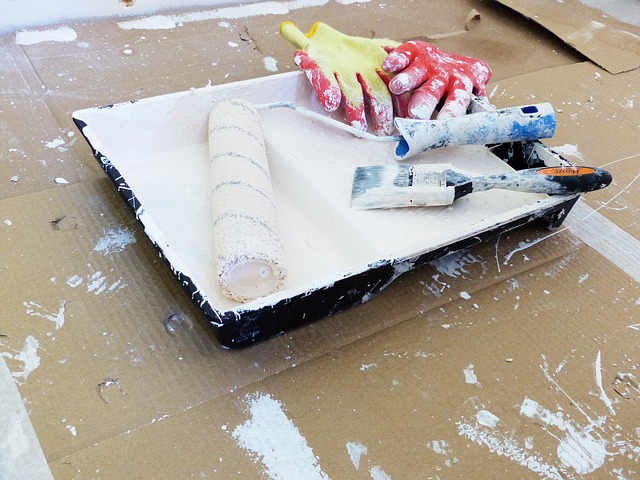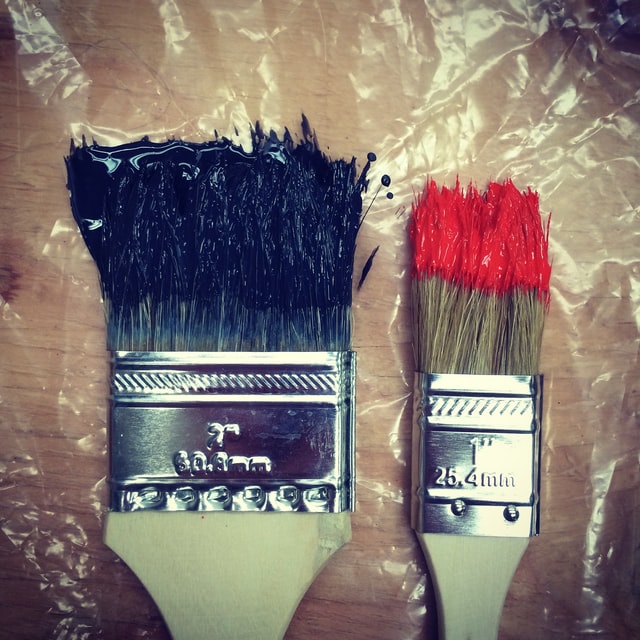This excerpt has been taken from “Choosing the Right Tool for Every Home Improvement Job Sandor Nagyszalanczy”. Paint rollers is a paint application tool used for painting large flat surfaces rapidly and efficiently. It typically consists of two parts: a “roller frame,” and a “roller cover.” The roller cover absorbs the paint and transfers it to the painted surface. “Painters Washington DC” renders these kin of services.
Paint Rollers
When finishing a large area, such as a wall or ceiling, a paint roller can apply paint almost as quickly as a power sprayer can, but it costs far less and doesn’t generate messy over-spray. Using a paint roller requires the purchase of several separate components: a roller frame (handle), roller cover, and a paint tray.
Frames
A good roller frame has a comfortable hand grip( sometimes rubberizes) and a metal wire or fiberglass-reinforced nylon cage that holds the cover snugly, preventing it from slipping or walking off during rolling, while still allowing it to be removed quickly and easily ( avoid inexpensive roller handles that attach the roller with a wing nut).
Most roller handles have a threaded end that fits an extension pole- handy for lengthening your reach when painting floors without stooping or ceilings without a ladder. Standard roller frames, best for painting large areas, are 9 in. long and ½ in. in diameter. Smaller 3-in. and 4-in. frames are great for rolling smaller areas and trim, as well as for touch-ups. You can also find rollers specialized for different jobs- painting inside corners, radiators, or rounded columns, for example.
Roller Covers
The cover you put on a roller frame has everything to do with how well (or badly) your finishing job will go. There are dozens of different kinds of standard roller covers to choose from, as well as special textured rollers for decorative effects (see “Finish Application Devices”). Like paintbrushes, standard covers made from synthetic materials ( polyester fabric, foam, etc.) are recommended for applying latex paints and water- based finishes, while natural fiber covers, made with mohair or a blend of polyester and lamb’s wool, are recommended for oil- based paints, varnish, and stains.
Both natural and synthetic covers are distinguished by their nap, the amount that their fur sticks up from the tube core (like the pile of a carpet). Nap length ranges from 3/6 in. to 11/2 in. and should suit the surface and finish. As a general rule, the smoother the surface, the shorter naps are also better for glossier paints and finishes. For example, you’d typically use a short (1/4 – in. or less) nap when rolling a gloss enamel on smooth kitchen walls and a longer (¾- in or more) nap for applying flat latex paint on the textured ceiling in the den. The chart on the facing page shows the proper nap lengths for a variety of household surfaces.
Higher- quality lint-free (or shed- resistant or epoxy- set) rollers shed less fur than bargain covers. It’s worth spending more on a surfaces when you’re finishing a high- profile where small defects are likely to show, such as well- lit entrance hall. Another strategy finishing surface imperfections is to a cover with a longer nap than is recommended, which will create a surface effect in the final painted surface.
Trays Roller trays are made of metal or plastic and come in many different sizes. Larger, deeper trays hold more paint, but they’re heavier and more difficult to move when full. All trays have a textured pattern or grid on them, which helps distribute paint evenly across the roller and wrings out extra paint so the roller won’t drip.

Roller Tray Liners and Paint- Can Lids
These two paintings accessories are inexpensive and really make cleanup a lot easier. Plastic tray lines are a must if you use a paint roller to apply latex paints- there’s just no sense spending time washing out a tray after every use. The thin liner presses down into the plastic or metal tray to hold the paint- you simply throw it away after the job. Just be aware that each style and size of roller tray uses a different liner- the wrong one won’t fit.
A neat new alternative to tray liners is a disposable roller tray. The tray’s clam-shell- style lid is designed to close with the roller inside, thus you can stop work for the day without having to empty the tray and wash the roller cover.
Plastic paint- can lids solve a couple of common problems inherent with standard 1- gal. Paint cans. Most styles replace a can’s regular lid and have a built- in vented about for pouring paint into trays, and they also have a wider opening conducive to brushing right out of the can. The plastic lid seals tightly when not in use- much easier than prying off (and banging on) a regular lid. Best of all, the lid snaps over the can’s rim and prevents paint from flooding into it, so the lid won’t stick when you replace it after the job’s done. You can also buy a simple plastic ring that seals the can’s rim.

Finish application devices
Sea sponges and faux and decorative finishing applicators are probably the most written about kinds of do- it- yourself finishing tools. Indeed, stroll through the paint department in a big, well- stocked home center and you’ll see all manner of finish application devices, each for creating a different kind of decorative finish. Some traditional applicators take considerable skill to use effectively- a feather, for example, which is used in creating a faux veined- marble effect.
Fortunately, there’s no shortage of decorative devices that are easy to use and that produce good results- even on the first try. These include: sea sponges, for blotting on an irregular pattern or deep stipple marks; rag rollers, for applying glaze in a zebra- stripe pattern; accent rollers, for creating a repeating- pattern border around a room; and dragging brushes, for producing a glazed surface with a brushed look.
Continue reading on Kitchen Fire




